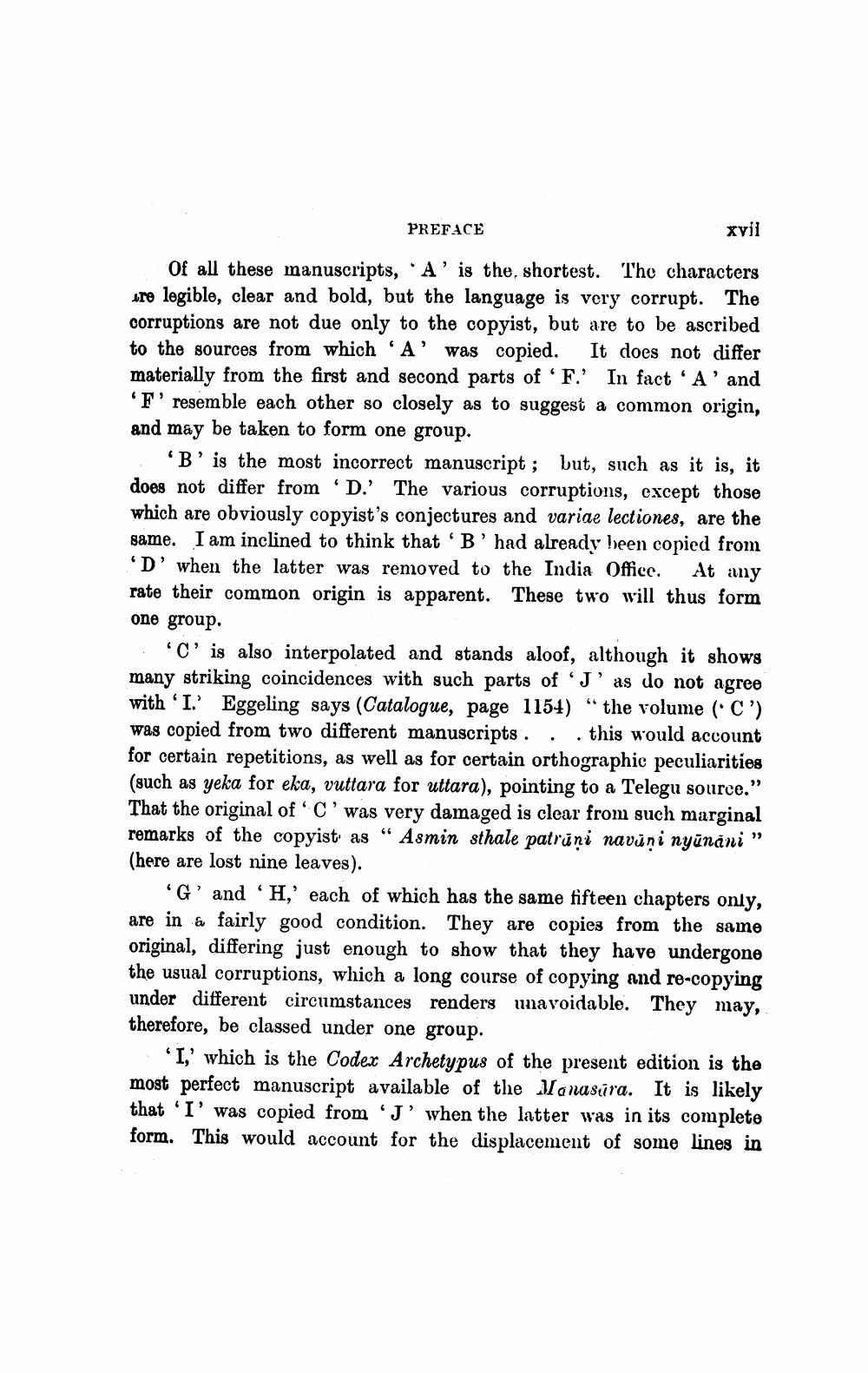________________
PREFACE
xvii
Of all these manuscripts, 'A' is the shortest. The characters ire legible, clear and bold, but the language is very corrupt. The corruptions are not due only to the copyist, but are to be ascribed to the sources from which 'A' was copied. It does not differ materially from the first and second parts of 'F' In fact ‘A’ and 'F' resemble each other so closely as to suggest a common origin, and may be taken to form one group.
'B' is the most incorrect manuscript; but, such as it is, it does not differ from ‘D.' The various corruptions, except those which are obviously copyist's conjectures and variae lectiones, are the same. I am inclined to think that 'B' had already been copied from
D' when the latter was removed to the India Office. At any rate their common origin is apparent. These two will thus form one group.
- 'C' is also interpolated and stands aloof, although it shows many striking coincidences with such parts of J'as do not agree with 'I.' Eggeling says (Catalogue, page 1154) “the volume (C') was copied from two different manuscripts . . . this would account for certain repetitions, as well as for certain orthographic peculiarities (such as yeka for eka, vuttara for uttara), pointing to a Telegu source.” That the original of 'C' was very damaged is clear from such marginal remarks of the copyist as “ Asmin sthale patrūņi navůni nyünăni” (here are lost nine leaves).
'G' and 'H' each of which has the same fifteen chapters only, are in a fairly good condition. They are copies from the same original, differing just enough to show that they have undergone the usual corruptions, which a long course of copying and re-copying under different circumstances renders unavoidable. They may, therefore, be classed under one group.
'I,' which is the Codex Archetypus of the present edition is the most perfect manuscript available of the Manastira. It is likely that 'I' was copied from 'J' when the latter was in its complete form. This would account for the displacement of some lines in




